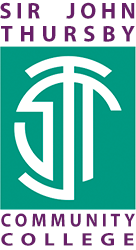Year 9 Design & Technology
| Systems Control | |||
| Topic | Structures, Mechanisms and Systems | ||
| No of lessons | 12 | ||
| When is it happening | Year 9 | ||
| What will students learn |
Students will learn about the qualities and skills required to be an effective designer and engineer using electronics. Students will learn how to collaborate in teams to solve a practical problem using elements of the iterative design process. Students will learn about designing and building basic structures using triangulation. Students will learn to program and use a range of inputs/processes/outputs. |
||
| Key Knowledge that students should know at the end of 'Topic' | This is the knowledge that students will meet for the first time in this topic |
Students will learn the skills and qualities required of a professional designer/engineer. These will include basic structures; form - triangulation and arches. Strength to weight ratio. Systems analysis, Systems, subsystems, diagrams. Pulley systems including mechanical advantage. Electronic systems including a review of previous projects in Years 7/8. Programmable Interface Controllers (PICs). Programming to use with a range of input and output components (subsystems). |
|
| This is knowledge that students may have met before but will need to deepen their understanding |
Students will be familiar with the iterative design process as taught in Y8 Systems & Control. Students will have an understanding of what a 'mechanical system' is. Students will be familiar with a range of electronic input and output components used in Y7 and Y8 Produce Design Electronics projects |
||
| Key Skills that students should be able to demonstrate at the end of 'Topic' | This is the skills that students will meet for the first time in this topic | Students will have development of ‘soft skills' via teamwork. Development of problem solving and designing skills using elements of the iterative design process. Development of practical skills in building and testing design concepts using modelling. Development of analytical skills in testing and evaluation of models at each stage of construction. Development of understanding of electronic control systems by practical experimentation. | |
| This is skills that students may have met before but will need to develop |
Students should be able to work independently and to collaborate to solve a practical design challenge using a range of materials. Students should be able to identify elements of a system by breaking it down into subsystems and using individual subsystems to design and build solutions to a range of scenarios. |
||
| Key vocabulary that students should know and understand | PIC , subsystems, Analysis, Design concept | ||
| The Big Question | |||
|
Key questions that students should be able to answer at the end of the 'Topic' |
List the skills and personal qualities required to be an effective professional designer or engineer? | ||
| What is a control system? Name the subsystems ? | |||
| Define what is meant by a 'structure'? | |||
| What is triangulation and why is it useful? | |||
| What are pulleys and what are their two main functions? | |||
| What is meant by the mechanical advantage of a mechanical system? | |||
| What is a PIC? | |||
| What is a flow-chart? | |||
| Name 3 common electronic input components ? | |||
| Name 3 common electronic output components? | |||
| Name 3 programmable functions of a PIC? | |||
